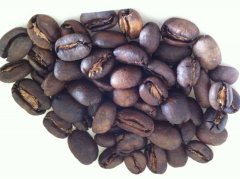Beautiful coffee fruit
Coffee growing belt
Most of the coffee producing areas in the world are located in the tropics between the Tropic of Cancer and the Tropic of Cancer, which we call the "coffee belt" or Coffee Belt or Coffee Zone in English. As a tropical cash crop, coffee tree grows in the coffee belt with excellent climatic conditions, where the sun shines all the year round, has abundant calories and abundant Rain Water, and the annual average temperature is above 20 ℃. However, not all kinds of coffee trees can endure high temperature, humidity, and strong light. For example, some Arabica coffee trees are not resistant to high temperature and humidity, and they are often planted in areas at higher elevations. If the light is too strong, shade treatment is also needed, hence the name "rainforest coffee" and "shade coffee".

Coffee fruit
The coffee fruit is very small, like a cherry. Ripe coffee fruit is red (special varieties are not discussed), also known as coffee cherries. There are three main native species of coffee: Arabica coffee (low yield, delicate, but high quality), Robusta (most productive, easy to raise, but not good quality), and Liberia (varieties that are disappearing, not discussed).

It is very hard to pick coffee fruits. Brazil is picked by machine, but most good beans need to be picked by hand, because the coffee fruit ripens at different times and needs to be picked several times.

You can see clearly in the anatomical picture that the coffee bean is the middle part. The skin and flesh of the fruit should be removed during processing. Silver skin, also known as seed skin, will also fall during baking.


Exocarp, pectin layer, endocarp

After the coffee beans are roasted into ripe beans, many chemical changes have taken place in the beans. New substances are constantly produced, and it is at this time that the aromatic substances in coffee are produced.
After the coffee fruit is picked, it is washed or dried into our common raw coffee beans. Raw beans are then baked at high temperature to become ripe beans. The cooked beans are ground into coffee powder, and the coffee powder is extracted in contact with water to become the black coffee we drink. No additives are added to the whole process! This is really healthy coffee!
Please don't say that coffee is unhealthy, because you haven't had real coffee yet, because you don't know coffee yet!
Important Notice :
前街咖啡 FrontStreet Coffee has moved to new addredd:
FrontStreet Coffee Address: 315,Donghua East Road,GuangZhou
Tel:020 38364473
- Prev

PWN Manning GAYO G1
Manning Coffee is produced in Sumatra, Indonesia, Asia, also known as "Sumatran Coffee".
- Next

Kenya Nieli Coffee
When baking this pot of Kenya Nyeri AA Tegu, the baking stops at the first sound of the second explosion, although the acidity of Kenya is still strong ~ overall feeling, like the traditional Kenya, good viscosity, strong sour fruit, complex taste ~ the following information comes from sweetmarias Country: Kenya Grade: AA Region: Nyeri Mark: Tegu Factory
Related
- Guji coffee producing area of Guji, Ethiopia: Humbela, Shakiso, Wulaga
- What is the most expensive variety of Qiloso in BOP multi-variety group?
- How to store the coffee beans bought home?
- Why are Yemeni coffee beans so rare now?
- Ethiopian Sidamo all Red Fruit Sun Sun Santa Vini Coffee beans
- SOE is mostly sour? What does it mean? Is it a single bean? what's the difference between it and Italian blending?
- Is Italian coffee beans suitable for making hand-brewed coffee?
- How to choose coffee beans when making cold coffee? What kind of coffee beans are suitable for making cold coffee?
- Just entered the pit to make coffee, what kind of coffee beans should be chosen?
- Can only Japan buy real Blue Mountain Coffee? What are authentic Jamaican Blue Mountain coffee beans?

